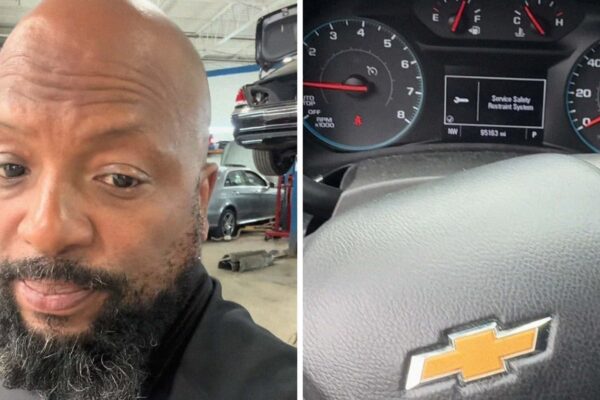Trucks don’t follow the typical 6-7 year life cycle of cars and SUVs, because they tend to last longer. However, even by pick-up standards, you could say the Hilux has overstayed its welcome. It has gone through several facelifts, but the fact remains that it is largely the same car that was launched a decade ago. Fortunately, Toyota is overhauling its indestructible pickup truck for 2026.
Moving a reputable backbone to the ninth generation brings about major changes. for the first time, Toyota It designed a fully electric Hilux. In fact, the BEV-badged model is at the forefront of the lineup launch. This explains why all the press shots show the version without a combustion engine before its market launch next month.
These official images have something else in common: they all depict a Hilux Double Cab. This is because Toyota is eliminating all other previously available body styles. We’re told the decision stems from customer demand, with buyers overwhelmingly favoring this configuration.
Given that it replaces a truck launched in 2015, it’s no surprise that the new Hilux looks vastly different. Toyota has beefed up the design with a more angular design to go with it Tacoma. It also ditches the company logo in favor of a large wordmark, flanked by slim headlights for a more modern look.
Photo by: Toyota
The closed top of the front section indicates that we are looking at an EV version. Naturally, models with combustion engines will need additional cooling, which necessitates a conventional grille. The charging port is mounted on the front bumper, while combustion-powered versions are expected to retain the rear-mounted fuel cap.
Elsewhere, the wheel design is exclusive to the EV, and all models feature a new rear step for easier access to the load bed. The side steps have also been redesigned to facilitate entry and exit. At the back, the tailgate takes on a slice of Americana with massive embossed Toyota lettering. The truck’s name is neatly integrated into the door handle, just below the obligatory third brake light.
Photo by: Toyota
The Hilux’s interior is definitely showing its age, prompting Toyota to give the entire cabin a thorough overhaul and bring it in line with its latest products. If the center console looks familiar, that’s because it’s inspired by Land Cruiser. As with the exterior design, the cabin adopts a straight and angular design with geometric shapes to enhance the overall appearance.
Toyota has always championed physical controls, and the new Hilux doesn’t disappoint. Dual 12.3-inch displays are complemented by a wide range of traditional buttons for climate control and all-wheel drive devices. Most commonly used functions are just a push of a button away, eliminating the need to fumble through touchscreen submenus. It’s a practical, straightforward design, exactly what you’d expect from a no-nonsense truck.
As for technical specifications, Toyota is focusing on the EV version at the moment. The dual-motor setup draws power from a 59.2 kWh lithium-ion battery, good for about 149 miles (240 km) of WLTP range. The front motor produces 151 lb-ft (205 Nm) of torque, while the rear motor generates 198 lb-ft (269 Nm), resulting in a maximum payload capacity of 1,576 lbs (715 kg). As for towing, the Hilux Electric can tow up to 3,527 pounds (1,600 kg).
Photo by: Toyota
However, Toyota knows that an electric car won’t suit everyone, which is why the 2.8-litre turbo diesel engine with mild-hybrid technology will continue in the new generation. It can carry up to 2,205 lbs (1,000 kg) and tow 7,716 lbs (3,500 kg), making it more suitable for heavy duty work than the electric Hilux. In Eastern Europe, the range will also include non-electrified 2.8-litre diesel engines and a 2.7-litre petrol engine.
Looking to the future, Toyota’s diversification plan goes beyond just battery power. Starting in 2028, a fuel cell version will join the range, because Toyota still believes in hydrogen. The company is also teaming up with BMW to help the German automaker launch its first fuel cell vehicle, a fuel cell car iX5 Hydrogenin the same year.
The update extends to other areas as well. The new Hilux is the first of its kind to feature Electric Power Steering (EPS), although it will be limited to Western European markets. Eastern Europe will retain the traditional hydraulic system. Additional new technology includes blind spot monitoring, a driver monitoring camera, and Safe Exit Assist.
Over-the-air updates are supported, along with a wider range of Toyota Safety Sense features such as Emergency Stop, Low-Speed Acceleration Suppression, and Proactive Driving Assist. The electric version adds a transmission drive selector, while all models get a wireless charging pad and new rear USB ports.
The new Hilux will go on sale in Europe next December, followed by production of the mild-hybrid diesel model next spring. Unsurprisingly, Toyota expects the latter to be the best seller on the continent. The diesel remains the ideal all-rounder model, and we think it will significantly undermine the purely electric model.
The ninth generation Hilux is based on a proven formula, and Toyota appears to have made all the right updates. It has a lot of work ahead, given that more than 21 million units have been sold since the original debuted in 1968. The truck is assembled in six countries and sold in more than 180 markets. However, don’t expect to see it stateside, where it will overlap with the Tacoma.



